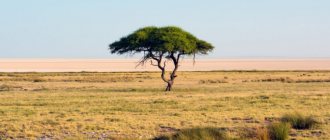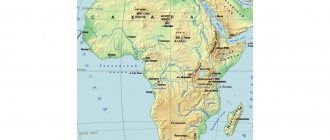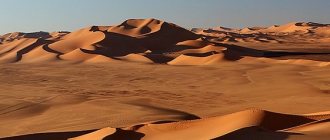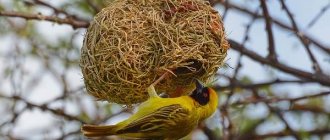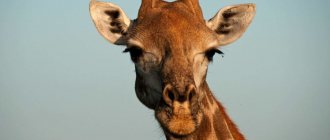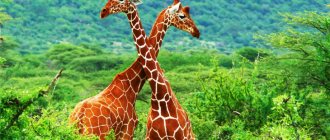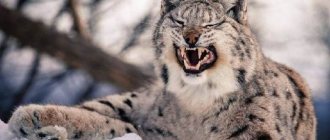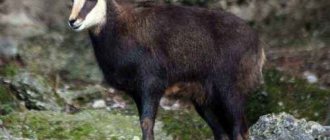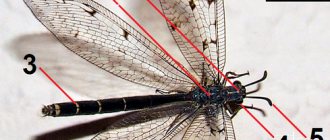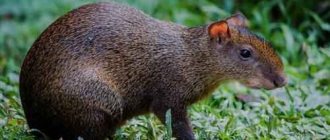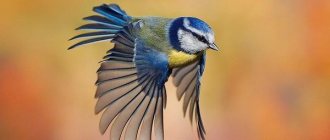The African continent is one of the largest in area on the planet, second in size only to Eurasia. Due to the peculiarities of the geographical location, various natural complexes have formed here, and the flora and fauna of Africa are diverse and unique. The exotic nature of the continent includes both endemic and endangered species of flora and fauna.
↑ Description
Africa occupies the northern and southern hemispheres, eastern and western too. The equator runs through the middle of the continent, there is constant heat and humidity.
The northern part is desert and drought, with peculiar vegetation and exotic animals. South Africa is mountainous with an evergreen nature of tropical forests, savannas and jungles inhabited by inhabitants of hot areas.
African nature photo
The coasts are covered with bushes. Mountains are found in the northwest and on the outskirts, but more often there are plains with lakes and quaint rivers with rapids and waterfalls.
Spiders
African baboon spider
The baboon spider is a spider from the family Theraphosidae, with a relatively strong venom. It can inflict a painful bite; however, most of these spiders are not considered dangerous to humans. The geographical range includes the territories of South Africa.
Baboon spiders are terrestrial and build silken burrows, often under stones or in rocks. Habitats include savannah forests, grasslands and dry scrubland.
Darwin's spider
Darwin's spider belongs to the orb weaver family. As with other species of spiders, sexual dimorphism is noticeable, with females being larger than males. The body length of females varies from 18 to 22 mm, while the length of males is about 6 mm.
These spiders create a unique biological material - a web, which reaches enormous sizes and is very strong.
Six-eyed sand spider
This is a medium sized spider species. The body length ranges from 8 to 15 mm, and the paw length reaches 50 mm. The six-eyed sand spider lives in deserts and other sandy areas of southern Africa. Attacks on humans are rare: there is not a single proven case. However, an experiment was conducted in which this spider bit a rabbit, the outcome was fatal (the death of the animal occurs 5-12 hours after the bite).
↑ Main components
- The climate is hot, moderated by the high humidity of river areas.
- Relief. The average altitudes of North-West Africa do not exceed 1000 m, and in the South-East they are much higher.
- There is a lot of precipitation during the rainy season. At the equator they fall every day.
- The flora is amazingly diverse, with an abundance of flowering plants, xerophytes and ephemerals.
- The fauna consists of mammals, birds, many insects and reptile species.
- Natural areas. Deserts and semi-deserts, savanna, equatorial evergreen forests.
leopard photo
Fauna of equatorial forests
The fauna of Africa along the equator is also very diverse, as is the plant life. Animals in these forests live mainly in trees. Therefore, mainly birds, rodents and insects are common here. African monkeys such as chimpanzees, monkeys, and baboons live in the jungle. Gorillas are very secretive animals; they prefer wilder and more inaccessible areas of equatorial forests. These great apes are endemic representatives of the fauna of the equatorial forests of Africa.
As already mentioned, almost no grass grows in these forests, so ungulates live here, choosing leaves as their food. These are forest antelopes (bongos), small giraffes (okapis), wild boars, and whale pigs. Predators live and hunt in trees. These are civets, leopards, wild cats. Among the birds there is a wide variety of parrots. There are also snakes.
↑ Diversity
Africa is a place where natural areas are located according to geographical rules:
- In the northern and southern parts, with a dominant Mediterranean climate, on brown soils there is a zone of hard-leaved evergreen forest and shrubs.
- Further vast territories are occupied by semi-deserts and deserts with a tropical climate.
- The central parts are occupied by savannas on red soils. The climate here is subequatorial.
- Also in the subequatorial climate and in the equatorial climate there is a zone of moist forests on red-yellow and ferralitic soils.
Breeding offspring
Often, single males stay close to the herd to produce offspring. The female can do this once every two years. She carries the cubs for a year, and then feeds them for another year. If there is a calf next to the mother, then she will not soon be able to bear and feed another baby again. Sometimes males don't look at this and are cruelly rejected.
During the rains, herds with many young animals migrate, constantly crossing water spaces. It is very common for calves to drown or get lost. Then it is difficult for them to find the mother in the herd, and she herself does not even try to look for him - she easily accepts this situation.
Buffalo with baby
Calves usually immediately stand up and follow their mother. Although not everyone has the strength to do this. To overcome obstacles and walk long distances, you need to eat a lot of nutritious food, which is the female’s milk. It contributes to the development of the baby, and not only gives strength.
↑ Features
The main thing: a lot of sun, summer months with temperatures in the desert below 60 degrees, in winter plus 30, many hills and plateaus. Here is the famous Sahara Desert, and the territory is inhabited by African land mammals. In the deserts in the spring there are sandstorms for 1-7 days, from the beginning of May the constant temperature is above 35 degrees, the nights are cool.
sandstorms photos
The mild climate of Western Sahara allows the cultivation of vegetables, grains and fruits. Savannahs have two seasons: dry and wet. From September the heat drops to 25 degrees and gives way to the rainy season.
Deserts
The nature of the continent of Africa is primarily desert sand dunes, reaching a height of 180 meters. The world's largest desert, the Sahara, covers an area equal to the size of the United States or Europe.
The highest air temperature was recorded on the surface of the African land, and the stones here sometimes heat up to 70 degrees. Of course, one cannot fail to mention another desert - the Namib, which stretches across the territories of Angola and Namibia (southwest of the mainland) and covers an area of 80,000 square meters. km. This is the oldest desert on Earth (the age of the dry period is about 55 million years). The Kalahari Desert, located in southern Africa, is one of the most beautiful on Earth.
The nature of deserts is quite scarce both in terms of flora and animals. The air temperature rises to +60 °C, and there is virtually no water for many hundreds of kilometers. With all this, although it seems that the endless sand dunes are lifeless, in fact this is far from the case. Life is bustling here in its own way.
The wildlife of Africa as a whole surprises with its diversity. It would seem, how can one survive without water in such heat? Living creatures living in deserts have learned to survive in such extreme conditions. They are predominantly nocturnal and have learned to survive for a long time without water, self-cooling. They have adapted to camouflage themselves thanks to their color (reddish or yellow) and to move very quickly on loose sand.
What animals live in African deserts? These are horned vipers, scorpions, jerboas, small foxes (fennec fox), Dorcas gazelle (drinks several times throughout its life). And the most important and largest animal of the deserts of Africa is the dromedary camel.
↑ Animals
Famous animals of Africa include the lion and leopard, buffalo, rhinoceros and elephant. In addition, many zebras, antelopes and giraffes live here. Small predators are hyenas and jackals. Unusual animals include the aardvark, okapi and pygmy hippopotamus. The largest bird is the marabou; the smallest bird is the sunbird with bright plumage. The ostrich is also a large bird - it lives only in Africa.
aardvark photo
Spectacled penguins live in the south of the mainland. Interesting variety of amphibians, fish and insects. Here you can meet the largest beetle in the world - the goliath. But you should be wary of the malaria mosquito and the tsetse fly - carriers of dangerous diseases.
African lion
A powerful, graceful, harmoniously built predator is one of the most striking representatives of the cat family. The powerful animal has a powerful, muscular body just over two meters long. The average weight of an adult male is about 180 kg, females 120–150 kg. In rare cases, males reach 250 kg, females - 185 kg.
The head of males is decorated with a luxurious mane, which appears in lion cubs at the age of six months. The pile on the head of a three-year-old lion reaches 35–40 cm. The color, pomp of the hairstyle and its length depend on the amount of testosterone in the individual, its habitat and genetics.
Lions do not have great endurance, but when running short distances they can move at a speed of 80 km/h.
Photo: YouTube: UGC
Lions hunt the following animals:
- wildebeest;
- African warthog;
- zebra;
- buffalo;
- giraffe.
The females do the hunting in the pack. They pick up game and bring the carcass to the males. Lions are the first to satisfy their hunger, and females and cubs eat the leftovers. To survive, a lion needs to consume about 7 kg of meat daily, a female - 5 kg. At one time, a lion can eat up to 30 kg of meat.
Under natural conditions, these African predators live up to 15 years. In captivity, when providing a nutritious diet, the life expectancy of lions increases by 7 years.
↑ Plants
The northern part of Africa is covered with mountain forests, where oaks, Aleppo pine, Spanish fir, and atlas cedar grow. The central part is occupied by tropical rainforests with coconut palms, mango and cocoa trees, and banana plants.
baobab photo
It is interesting for tourists to see the pitaya cactus vine, bread and sausage trees. Enjoy the fruits of durian, guava, avocado, morinda, papaya. The space under the trees is overgrown with ferns, vines, bamboo and reeds. The symbol of Africa is the baobab tree.
Fish
Big tiger fish
The great tiger fish, also known as the giant hydrocine, is a very large, freshwater, predatory fish in the family Alestidae. It is found in the Congo River basin.
This predator grows up to 1.8 m in length and weighs 50 kg. Large tiger fish are ichthyophages, feeding on any fish they can handle, including smaller relatives.
Kalamoicht
Kalamoikht or snake fish, lives in West and Central Africa. Mainly found in freshwater lakes and rivers of Africa. The diet consists of small animals (insects and worms).
Kalamoikht reaches a maximum total length of 37 cm. It has an eel-like, elongated body without a ventral fin. The long dorsal fin consists of a number of well-separated spines. Kalamoicht has a pair of lungs, which allows it to breathe atmospheric air. This allows the fish to survive in water with low dissolved oxygen.
↑ Lakes and rivers
The location of the main watershed is the eastern part of the continent, and the rivers of this basin flow in this direction. The further from the equator, the less precipitation, the smaller the rivers. Many rivers have rapids and steep waterfalls.
- The Zambezi River is famous for the Victoria Falls, which are 1700 m wide and fall from 120 m.
- The Nile, 6,670 km long, is the only river in Africa that crosses the Sahara.
- The Congo is a deep river, as well as the Niger, Limpopo and Orange River.
Lake Victoria photo
There are 14 lakes, 7 of which are the Great African Lakes. The first place in size is in Victoria.
General characteristics of the geographical location
The continent of Africa is washed on different sides by two oceans and two seas. The east is washed by the Red Sea and the Indian Ocean, the west by the Atlantic Ocean, and the Mediterranean Sea adjoins the north. Africa's population is 933 million, and there are 55 countries on its territory, most of which, unfortunately, are recognized as the poorest states on Earth. The countries of Africa include three monarchies, the federal republic of Nigeria and republics. The continent of Africa is characterized by weak vertical and horizontal divisions. The geographical position of Africa is special, since the continent is located symmetrically to the equator. The continent is located between two tropics: the northernmost point is 37°20"N. – Cape Engel, southernmost point 34°5" S. w. – Cape Agulhas. Only the southern and northern outskirts are partially located in subtropical latitudes. What is unique is that most of the continent is located in a hot zone, the territory of which is constantly warmed by the Sun.
Best articles: Range and features of Hills cat food
The coastlines of Africa are slightly indented, so few harbors and bays have formed along the coast.
↑ Reserves
The task of nature reserves is to preserve the natural environment. Scientists and scientific researchers, studying and restoring populations of endangered animals, work:
- In Air and Tenere.
- In the Masai Mara National Game Reserve.
- In the oldest Serengeti.
- In the vast Kruger Park.
- In the Central Kalahari - the homeland of the Bushmen.
- Ngorongoro, the place where primitive man appeared.
- On the territory of Uganda in Rwenzori.
- In the intact biosystem of Rungwa.
- Among typical African animals in Selous.
- In Mozambican Nyasa.
Kruger Park photo
spotted hyena
One of the most famous representatives of the African desert. In this type of predator, the females are much heavier, stronger and more aggressive than the males. Their height is 90 cm and their weight is about 80 kg. A characteristic feature of spotted hyenas is the ability to emit a prolonged howl. If someone is in danger, the animal can begin to growl, which at times will be mixed with the sounds of giggling. Hyenas feed mainly on the corpses of other animals, but if necessary, when hunting they can reach speeds of up to 65 km/h.
↑ Attractions
- The oldest buildings are the Egyptian pyramids near Cairo. The 150th pyramid of Khufu is one of the 7 wonders of the world.
- The mysterious Great Sphinx is a statue 20 m high and 70 m long.
- Cliff dwellings in Bandiagara where the Dogon live.
- Gate of Hell is the second name of the Dallol volcano with a crater below the sea level line. On the surface there are mineral substances of scarlet, yellow and green shades.
Dallol volcano photo
Cheetah
Cheetahs are slightly different from other members of the cat family and are classified as a separate subfamily. Its flexible body is more like a long-legged dog. The body length of this predator, excluding the tail, reaches 130 cm.
The short body and strong, thin legs allow the predator to reach speeds of up to 110 km/h at a distance of up to 500 meters. Among all the species of land mammals that Africa gave the world, animals of this subspecies are the fastest and fastest. Predators have well-developed lungs and hearts.
Photo: popmech.ru: UGC
The predator hunts during the day or early evening, and in rare cases, at night. The animal has excellent eyesight. It selects a victim from a distance, quietly picks up and instantly rushes after its prey. Cheetahs can change direction at great speed with lightning speed, which allows them to catch up with zigzag running deer. The predator's diet consists of antelopes, goitered gazelles, argali, gazelles, birds and hares.
Cheetahs do not gather in packs; they live in pairs or alone. A predator gives birth to 1–2 cubs, in rare cases the number of cubs reaches six. The female cheetah feeds the babies for up to 8 months. Already at 3-4 months they go hunting with their mother, and at 20 months young cheetahs separate and live independently.
↑ Comparison of the nature of Australia and Africa
The continents of Australia and Africa, two hot and sunny continents. Differences:
- Africa is the second largest continent, Australia is the smallest.
- There are 10 active volcanoes in Africa, and 1 in Australia.
- Africa is crossed by many rivers fed by rainwater; Australia has one river that is filled with underground water.
- In Australia, deserts occupy a larger area than in Africa.
- Africa - moist equatorial forest, Australia - variable-humid tropical and mixed forest.
Cliff dwellings in Bandiagara photo
Similarities:
- The continents are dominated by tropical and subequatorial climates.
- Both continents have deserts, savannas, hard-leaved forests and shrubs.
- Africa is known for its jungles filled with exotic plants. In Australia, 23% is meadow vegetation, with a lot of acacia and eucalyptus trees.
- Africa is home to large predators and herbivores, while Australia is home to marsupials and oviparous mammals.
Caracal
An elegant, graceful predator weighing 11–20 kg lives in deserted steppes, foothills, savannas, and deserts. The body length of a caracal without a tail is 65–82 cm. The shortened tail reaches 25–30 cm. The height of the animal is 45 cm.
Photo: sgs-cats.com: UGC
Powerful jaws allow you to hunt the following animals:
- hare;
- gerbil;
- small antelope;
- jerboa;
- hedgehog, porcupine;
- young ostrich;
- mongoose;
- fox.
The caracal cannot run for a long time. He lies in wait for his prey and catches it with a big leap. The animal, despite its small size, can overcome 4.5 meters in one jump. The predator has a lightning-fast reaction. He can catch a flying bird in a jump.
The caracal saves the remains of its meal from other predators by dragging it into trees. The animal receives life-giving moisture from the prey it absorbs and does without water for a long time.
↑ Interesting facts
- The sugar region is larger in area than the United States.
- The black lake is filled not with water, but with ink, the fish live, but there is no algae.
- The rodent Naked mole rat has no sensitivity to some pain.
- Salt Lake Natron changes color, becoming either pink or bright scarlet. This is the breeding ground for flamingos.
- Kilimanjaro is an active volcano, but no one has seen an eruption.
Lake Natron photo
Crocodile
Representatives of this type of predator are considered one of the most ancient today, but at the same time the most developed. Only crocodiles have a four-chambered heart among all reptiles. They spend almost their entire lives in water, crawling onto land only to bask in the sun in the morning and evening. After birth, reptiles grow rapidly. Within 3 years, individuals reach one and a half meters in length. These reptiles can live for 100 years. They eat any animals they can handle: fish, worms, aquatic birds, reptiles, mollusks, insects, amphibians, mammals, crustaceans. They are cannibals because they eat weaker members of their species.
The wealth of the continent
The continent has many natural resources, which are indicated on the world map. However, they are distributed unevenly and represent the main source of income for the population, since industry and the industrial sector are poorly developed. Africans survive by deforestation , sometimes illegally; income comes from fishing and growing bananas.
Africa has a good supply of water, but it is not distributed properly. The Zambezi, Congo, Niger, Nile, and Limpopo rivers pass through the continent. Lakes Chad, Victoria, Tanganyika, and Nyasa are of great importance in water supply.
The vast surrounding areas are represented by soils of average fertility, but they are wild and not cultivated by humans. Only 10% of favorable soils are subject to legal processing. It is on this continent that about 30% of the world's mineral reserves are located:
- oil;
- platinum;
- gold;
- Uranus;
- diamonds;
- cobalt;
- bauxite (in Guinea).
Pemphigus
Bladderwort prefers to grow in moist soil or fresh water. Uses bubble traps that barely reach 1.2 cm. The most common prey of this plant are tadpoles, protozoa and water fleas. Bubbles hunt extremely quickly, literally in thousandths of a second. Experiencing negative pressure to the environment, the trap opens, sucks in everything from the environment, including water, and closes the valve.
Getting to know the Sahara
The desert is the largest, occupying the northern part of the continent with an area of 8.6 square meters. km. It passes through the following countries with outlined borders:
- Sudan;
- Egypt;
- Chad;
- Mali;
- Algeria;
- Libya;
- Mauritania.
The typical relief of the Sahara is represented by island mountains, there are flat areas, depressions, giving way to highlands. Oases with indoor pools are periodically visible; the only water artery is the Nile River. The average daily temperature is +35 degrees , the desert is affected by the north wind, reaching even the sandy expanses in the central part. It often causes tornadoes and storms.
Islands of life are rare oases, the main feature of which is groundwater located close to the surface. It is in such places that there are sources of water and lakes that provide for the growth of plants. Oases are inhabited; people live in their territories, leading an isolated existence.
Ecological problems
Negative industrial and natural changes have occurred on the hot continent. A global problem is that only half of local residents have access to fresh water. Horrifying fact: about 20% of child deaths are due to thirst. The situation is worsened by the activities of industrial facilities that pollute waterways.
An equally serious problem is represented by droughts observed near the Sahara. It is not surprising that its area is expanding every year into the middle of the continent. A severe drought hit Namibia in 2013 , destroying 90% of the crop.
Floods and heavy rains are observed in equatorial Africa. Soil erosion occurs, crops are destroyed before they have time to sprout. Floods spread life-threatening infections.
The African continent is abundant in raw materials, which has caused massive poaching of rare animals. Deforestation is catastrophic, leading to changes in flora and climate in general. No less pressing is the problem of seizure and depletion of agricultural land. International conflicts arise during the extraction of oil, diamonds and gas.
The problem on a global scale is represented by the fact that garbage is brought to the mainland from different countries . The air masses are filled with complex metals and mercury, nature is dying.
